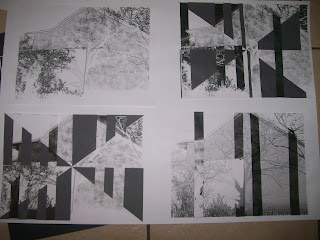Today along with the animation & vis com class we went to a talk given by Conor Horgan in the LIT building.
Conor Horgan is an Irish film director and photographer. He has directed eight films including shorts, arts documentaries and the multi-award winning feature One Hundred Mornings. His photography has been commissioned by Harpers & Queen, GQ, British Vogue and Condé Nast Traveller among many others.
He showed us some of his work and discussed the inspiration behind them. He spoke of his move to London where he purchased his first camera and getting his big break for the Irish Times, when his photo was featured on the cover of the Newspaper in the 80's.
According to Conor photography has a lot to do with recognising when you are in the right time and place and taking advantage of that opportunity. He spoke of how much coverage and publicity that photo brought him and how it led to a windfall in job opportunities at the time.
He spoke of the time he spent working in the advertisement industry and how for him it was soul crushing. His synopsis was that he was basically "creating suffering" as his understanding of advertising is that it's soul purpose is to convince people they need something and their lives are unfulfilled without such a product.
I found the talk really beneficial. He was very interesting to listen to and you were aware of the years of the experience he had form the way he spoke so honestly about his profession.
The Last Time
We watched his first short film "The Last Time" starring Linda Bassett (“East is East”). It received a nation-wide cinema release in Ireland and has been screened at many international festivals including Cannes, Clermont-Ferrand, and Tampere. “The Last Time” was the recipient of seven awards, including the UIP Director Award and Best Irish Short at The Cork Film Festival.One Hundred Mornings
We also were shown clips from Conor's first feature film, "One Hundred Mornings", which was released in 2011. It met with widespread critical acclaim, being named "one of the very best Irish films of the last decade” by The Irish Times and described as an "intelligent, delicate debut" by the New York Times."One Hundred Days". He spoke of the experience on set filming the project and spoke of spending months locating an ideal succluded house for filming.Deep End Dance
We finished by viewing "Deep End Dance". It was a beautiful piece of work capturing the relationship between a mother and son, dancing underwater.The Last Time | Directed by Conor Horgan
On hearing she may not have long to live, a woman in her fifties goes looking for love in all the wrong places.
A short film written and directed by Conor Horgan. Featuring Linda Bassett, Garrett Keogh and Brian Munn.
A short film written and directed by Conor Horgan. Featuring Linda Bassett, Garrett Keogh and Brian Munn.
Some stills from "One Hundred Mornings".
Deep End Dance
Mother and son, above and below the surface.
A short dance film, written and performed by David Bolger (choreographer and artistic director of CoisCéim Dance Theatre, Dublin) along with his 76-year-old mother, Madge Bolger. The film was shot in the Marian College swimming pool, where Madge worked as a swimming instructor for many years and where she taught David to swim.
A short dance film, written and performed by David Bolger (choreographer and artistic director of CoisCéim Dance Theatre, Dublin) along with his 76-year-old mother, Madge Bolger. The film was shot in the Marian College swimming pool, where Madge worked as a swimming instructor for many years and where she taught David to swim.





_01.jpg)




















































